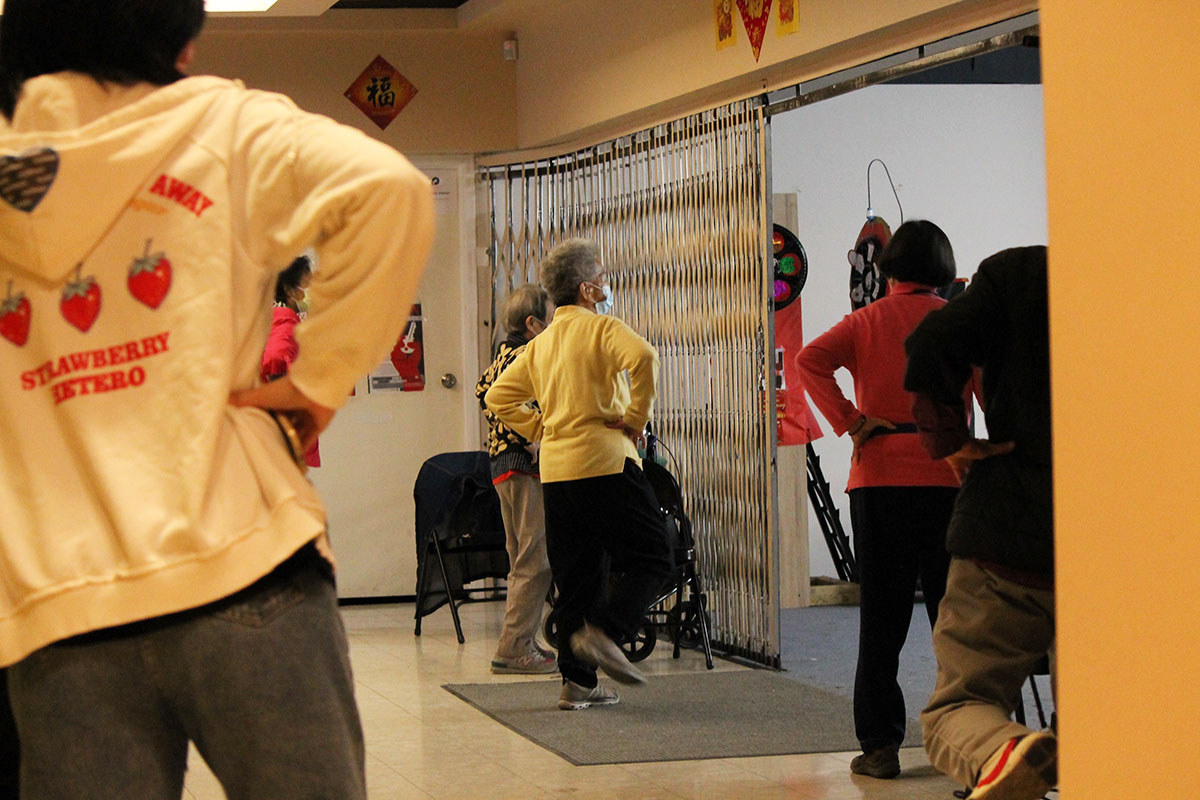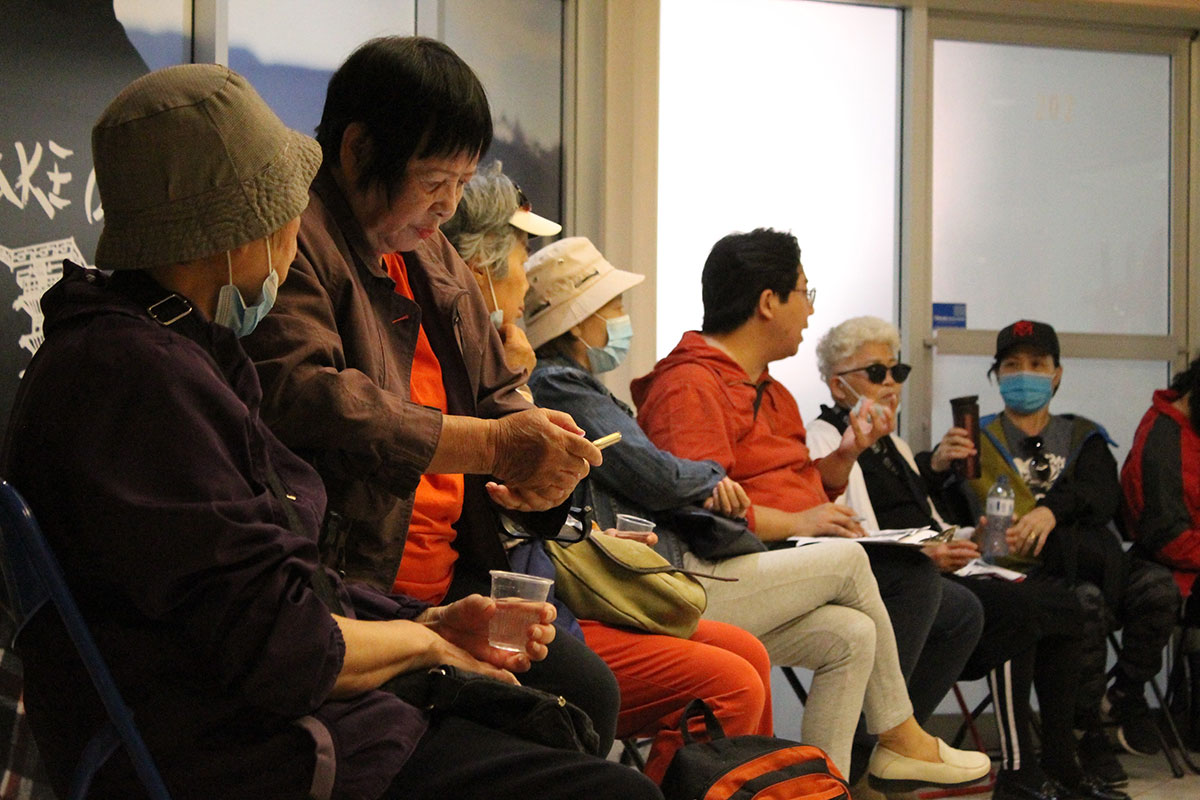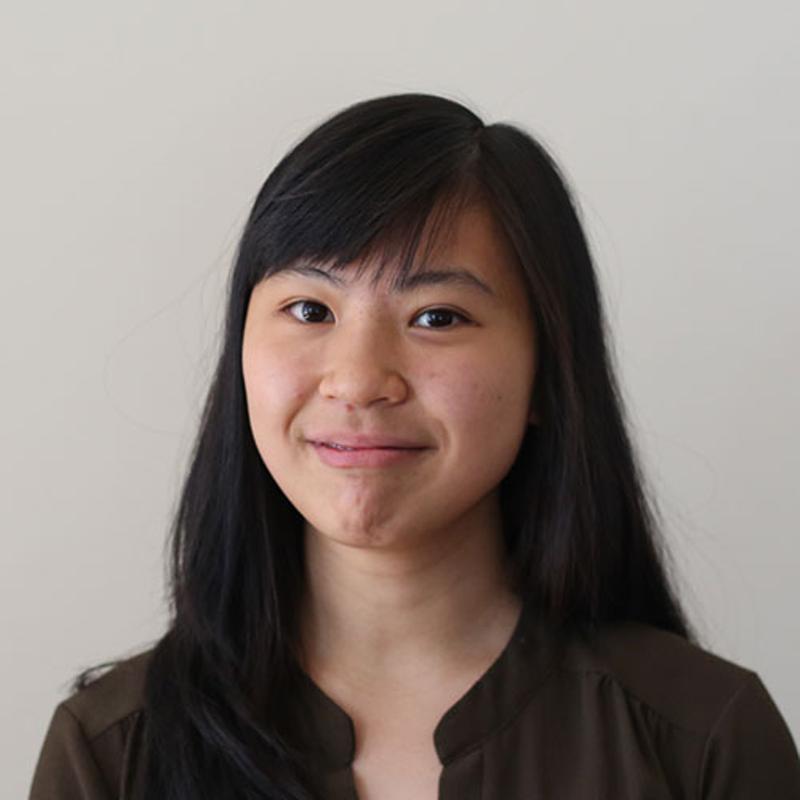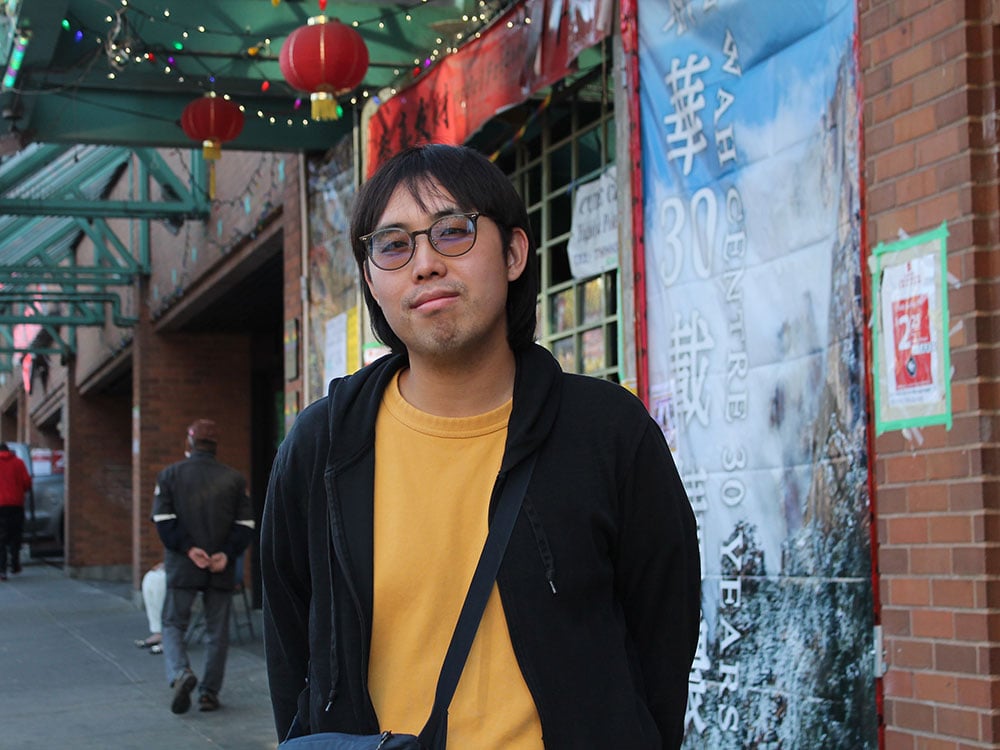[Editor’s note: In the first part of Kaitlyn Fung’s series exploring solutions to social isolation in Vancouver, she met with a host of people who have dedicated their professional lives to addressing Vancouver’s famous, resonant loneliness. Today, she brings us to Vancouver’s Chinatown and Downtown Eastside neighbourhoods, where unlikely alliances between two communities show what can happen when people cultivate relationships of care between their neighbours.]
Every day as the residents of Chinatown and the Downtown Eastside navigate life in the neighbourhood they share, they participate in something else that isn’t always apparent: a sense of community with each other.
Some might find that surprising in a part of the city where complex issues are affecting people in different ways. There are residents navigating a toxic drug supply and frequent displacement with nowhere else to go. Other residents, like low-income Chinese seniors, risk being subjected to racism and discrimination as they strive to meet their basic needs.
But connections — and relationships of care — exist between Downtown Eastsiders and members of the Chinese diaspora. And those relationships are illuminating, offering a guide for how we might all pay closer attention to those with whom we share our days and our streets. There’s an instructive tenderness and a sense of solidarity here that is rare in what can be an isolating city.
“Those small connections — small care, mutual care examples — are happening every day,” says Sean Cao, an artist and community organizer who supports Chinese seniors in the Downtown Eastside.
“One of the seniors who attend the events I organize, she found a wallet,” he recalls. But she couldn’t read the identification cards inside, which were in English. Wanting to return it despite this language barrier, she asked Cao for help.
“I checked the address ID. It shows that it’s a community centre — it’s not any specific home address. So it’s pretty clear that this person, very likely, [doesn’t] have a permanent home,” he explains.
Without another way to find the wallet’s owner, Cao mentioned it to Trey Helten, another friend and colleague in the Downtown Eastside. Helten, the general manager at the Overdose Prevention Society, reunited the wallet with its owner because he recognized it as belonging to someone he knows from his harm reduction work in the community.
When Cao told her afterwards, the Chinese senior who found the wallet was pleased she was able to help.
Stories of community connection like these are part of the everyday fabric of the community, Cao says. But the public discourse about the Downtown Eastside and Chinatown tends to pit the two neighbourhoods against each other.
Chinese seniors use drugs, too
Cao says the Downtown Eastside and Chinatown are often “intentionally divided” by a polarizing public conversation about both neighbourhoods.
Public safety in Chinatown, for example, is commonly discussed in relation to problems with crime and cleanliness that small businesses are facing in the area. Stories about the Downtown Eastside have long focused on the impacts of poverty, homelessness, mental health, and now the toxic drug supply.
Safety and crime in the Downtown Eastside were hot topics during the recent municipal election, including newly elected mayor Ken Sim’s campaign promise to hire “100 police officers and 100 nurses.” His eventual victory also highlighted generational and political divides in Chinatown.
Some celebrated the election of the city’s first Chinese-Canadian mayor while others were concerned with how a mayor endorsed by the police could exacerbate harms for Downtown Eastside residents.
After announcing the decriminalization of small-scale possession of illicit drugs in B.C. earlier this year, federal Minister of Mental Health and Addictions Carolyn Bennett commented that the “Chinese community has been very worried” about the prospect of safe supply and a decriminalization of illicit drugs that would enable drug users, like those in the Downtown Eastside.
But the so-called “Chinese community” has never been a monolith. There are others in Chinatown who view these issues, and the stakes they raise, as deeply intertwined.
Vince Tao, an organizer with the Vancouver Area of Network Drug Users, is one of them. He cautions against “reproducing this narrative that Chinatown and the Downtown Eastside cannot be friends” and that “they are enemies.”
That belief, he says, erases the fact that residents belong to multiple and sometimes overlapping communities, not just one or the other.
“Asian drug users, they exist — I am one of them! But also, they exist in the Downtown Eastside,” he says. He adds that they are generally the least served because they face a double layer of local exclusion: they’re excluded in Chinatown for using drugs, and they’re excluded in the Downtown Eastside because of racism.
Yet there seem to be few conversations about supporting the people who inhabit the intersections between these communities, or about how they intersect at all.
The COVID-19 pandemic, Tao says, was unfortunately “a perfect storm in the Downtown Eastside and Chinatown to dismantle a lot of social spaces and organizing spaces where that community could be built and nurtured.”
He notes that many of those relationships were built in activist organizing spaces, where people shared both interpersonal and political solidarity. He and several others I interviewed for this article cited the Our Homes Can’t Wait Coalition as a special example of cross-community collaboration in action.
Our Homes Can’t Wait consisted of groups from across the Downtown Eastside and Chinatown, advocating for former mayor Gregor Robertson to make good on his promise to build social housing on the city-owned 58 W. Hastings site. Construction finally began at 58 W. Hastings last year, but without the original promise of 100 per cent welfare-rate housing in all units.


Tintin Yang has spent time among both communities as a program co-ordinator and community media producer. She has worked at larger Chinatown-based organizations and more recently at the Downtown Eastside Neighbourhood House. She is also a community organizer with the Vancouver Tenants Union.
While working in Chinatown, Yang says that the overlapping struggles of the Chinatown and Downtown Eastside communities were rarely discussed and, oftentimes, actively avoided.
“I remember bringing it up and people were like, we're not going to talk about that,” she says. “People would even say outright ‘I don't think that's an appropriate question for you to ask,’ basically, with regards to how the revitalization of Chinatown may affect residents who are drug users or homeless.”
Instead, she says there’s “this mythical figure of this disgruntled senior who’s fighting for their life all the time, every day, in the Downtown Eastside,” but there’s little acknowledgment that “a lot of Chinese seniors also use drugs.”
Rachel Lau, a local multidisciplinary artist and the programs manager at Yarrow Intergenerational Society for Justice, adds that class can play a prominent role in these conversations.
Tensions can emerge when “there are perhaps wealthier Chinese people or groups in the neighborhood, who are, let's say, middle class or upper middle class, who have a very particular vision of what Chinatown should be,” says Lau.
“Often that comes with a very conservative set of politics that is very anti-drug use, is anti-homeless and anti-graffiti or vandalism, for example,” they add.
They also point out that sometimes the “historical or ongoing trauma of not wanting to be looked down upon as Chinese people, of being seen as dirty or poor” can factor into this line of thinking, including for Chinese seniors who have experienced racism and stigma first-hand.
Ultimately, says Yang, these sentiments stem from a “lack of analysis or understanding” about how challenges across communities are interconnected.
“Why are people sleeping on the street? Why are people's feces on the ground? Is it because there's no public washrooms? Is it because there's no housing that's appropriate and affordable?”
These questions are at the root of urgent issues in the neighbourhood, including the reality that many people in Chinatown and the Downtown Eastside aren’t having their needs met, needs they frequently share. Better housing, income and access to other basic necessities are sorely needed across both neighbourhoods.
Considering that, Lau feels there’s a “misdirected anger” when it comes to people’s concerns about the neighbourhood.
“It’s baffling to me that the anger is directed towards people who don't have access to a bathroom and running water, and how much of a crisis that is,” they say. “How is the anger directed towards people who are suffering?”

‘We want safety for regular people’
On the second floor of the Sun Wah Centre, Chinese seniors meet for their weekly exercise group on a warm September morning. A CD player, placed carefully on a folding chair, steadily doles out instructions in Mandarin over a gentle but upbeat melody.
Afterwards the seniors gather to collect a snack of bao (steamed buns) and listen to a brief discussion about supporting Indigenous communities, since it’s also the National Day for Truth and Reconciliation.
Chinese seniors like 80-year-old Yu Rong Li regularly enjoy these chances to socialize with their friends and learn about broader issues.
Yarrow Intergenerational Society for Justice supports Chinese seniors like her with crucial services around accessing housing, health and income, in addition to social and recreational activities like the weekly exercise group. They also offer educational workshops to discuss topics like colonialism and Indigenous history, an especially pertinent discussion since the Downtown Eastside is home to the highest population of Indigenous people in the city.
For Chinatown residents like Li, these workshops have helped her understand the issues impacting her neighbourhood. When Yarrow organized opportunities to attend community events like International Overdose Awareness Day as a group last year and this past August, Li also joined.
The connections between people in Chinatown and the Downtown Eastside are very clear to her. She sees this throughout her weekly routine, which takes her to access services at the Downtown Eastside Women’s Centre or to get food at the Salvation Army.
“A lot of programming, whether it’s food programming, is done by Indigenous people or other poor people,” she says in Mandarin, with Yarrow Society’s operations manager, Beverly Ho, translating her comments into English as we chat.
“They’ll take care of each other,” says Li. “Us Chinese people will also access these food programs, and they let us access it.”
These relationships of care constitute the support that Li receives in the neighbourhood, but also the support she wants to extend to others, too.
When asked how she feels about safety in the neighbourhood, and how it’s routinely discussed in the news or by politicians, her response is simple.
“We want safety for regular people,” says Li, noting that she observes that police seem to be disproportionately forceful towards low-income and Indigenous people. “We need people that care about Indigenous people, and the regular people here. We need [them] to care about old people, the elderly. It needs to be peaceful and equal.”
Of course, not everyone may feel the same as Li. But accessing information and varied perspectives on these topics, or the Downtown Eastside generally, is also difficult for Chinese seniors, who usually only have access to Chinese-language news media.
Many of those outlets tend to be more socially conservative or provide limited coverage, according to Ho. But opening a dialogue about it, they say, is a helpful process.
“It is important to push back and for me, at least, say, hey, I understand you feel unsafe, or you feel like Chinatown has changed a lot. But we can't say these things about other people,” says Ho. “We hear a lot of things on TV about Chinese people or about Chinatown that are not true, and this is the case as well.”
For Chinese seniors like Li, she’s happy to discuss these topics with her peers.
“There’s a lot of Indigenous and Black people and people who use drugs, and I hope that we can be their friends and have a mutual relationship,” she says. “They face a lot of discrimination in their lives.”



Listen to an exercise class with the seniors at Yarrow Intergenerational Society for Justice.
Listen to Yarrow Intergenerational Society for Justice staff and elders discussing Orange Shirt Day and the National Day for Truth and Reconciliation in Mandarin and Cantonese.
‘Aim where things intersect’
Just hours after the morning exercises in the Sun Wah Centre, several other Chinese seniors gather again on the same floor for another important conversation to be had in the neighbourhood.
Over the sound of crinkling plastic, as they unwrap steamed buns for lunch, they take a seat in a circle of chairs to discuss the importance of housing. This includes their experiences as Chinese seniors who are also tenants in the neighbourhood’s many single-room occupancy hotels.
Addressing these nuances is critical for Nicolas Yung, an organizer with Vancouver’s SRO Collaborative, which supports SRO tenants across Chinatown and the Downtown Eastside.
“That organizing,” says Yung, “is trying to aim where things intersect.”
Those intersections, and strengthening the relationships at their heart, are at the forefront of his work.

During the pandemic, SRO Collaborative partnered with Gain Wah Restaurant in Chinatown to create a coupon program for the nearby residents of the Keefer Rooms, a four-storey SRO above the restaurant. One of the Keefer Rooms' Indigenous tenants used the coupon to reunite with his daughter for a Christmas dinner at Gain Wah, after having not connected for many years.
But a September 2022 fire at the Keefer Rooms displaced all 39 tenants. Because of the fire, Gain Wah is also currently closed. According to an online fundraiser for the displaced tenants, the building’s owner is committed to allowing tenants to return, and Gain Wah’s owner has also vowed to return when possible.
Meanwhile, the relationships between the Keefer Room tenants and the staff of Gain Wah are on hold. So much continues to change in the neighbourhood.

Lotus Light Charity Society, a Buddhist-run organization that has operated in the Downtown Eastside since 1993, has observed many of these changes. For decades, its members have volunteered to provide basic necessities like meals, personal hygiene products and sleeping bags for unhoused people.
Supporting the neighbourhood is more complicated now, says Floyd Wong, Lotus Light’s current vice-president and a board director. He’s been involved with Lotus Light since it began, and grew up in the Strathcona area.
Escalated need during the pandemic is evident in the demand for the food programs they offer. “The last couple years, our operations have, I will say, increased at least four or five times,” he says. “Now it’s almost every day. We have the kitchen working two times a day.”
But Wong knows that their work on its own is not enough to address deeper issues. While Lotus Light can provide someone with a hot meal and a fresh set of clothes, they can’t provide major items like housing. “The only way to resolve this is the community and the government and organizations like us have to work together.”
Sean Ouyang, who has been involved with Lotus Light for 15 years, agrees that a comprehensive approach is needed. “But you could not just get a hotel, put the people in. They need other support, they need food, mental health, all the other things.”

During the pandemic, groups across the neighbourhood collaborated to push for vaccination clinics in the community, and to ensure they were accessible to local residents.
As part of his SRO tenant organizing work, Nicolas Yung spent much of the previous year advocating for those clinics. That work was done alongside other groups in the neighbourhood like the Carnegie Community Centre, Downtown Eastside Women’s Centre, Vancouver Second Mile Society, Watari and more.
They were able to vaccinate 2,000 people in the neighbourhood, he says, with work continuing this year.
Mike Tan, co-chair of the Chinatown Legacy Stewardship Group, says the work was hard when many of the groups today had never worked together at that scale before, but “it was worth just being able to work on a project that was able to strengthen those ties and relationships.”
While the scale may not always be so grand, those relationships can ultimately be built anywhere. Elsewhere in the neighbourhood, they’re already happening.



The care of each other’s company
At S2 Café House near East Hastings Street and Campbell Avenue, people head inside to find comfort in the simple dining room and good food, but also in the care of each other’s company.
Here, a $10 bill is more than enough to grab the full breakfast special, which costs $7.95. The affordable, wide-ranging menu also features comforting staples like omelettes, burgers, fried rice and home-style Chinese dishes.
The rhythms of Cantonese and English fill the café, as servers busily exchange orders with the kitchen in one language or answer the phone in another. This lively banter is readily shared with their patrons, too.
At the counter, a customer playfully teases one of the servers about the bill. Upon learning the total, she exclaims with mock outrage, “What!”
Without skipping a beat, the server loudly retorts, “What do you mean ‘what’?” before both of them burst into laughter.
Interactions like that are what made spaces like the Chinese-run S2 Café House so meaningful for Sekani Dakelth.
Dakelth is from the Tl'azt'en Nation in the northern Interior of the province, but she called the Downtown Eastside home for 11 years. S2 Café House was somewhere she could eat and still feel respected, which was difficult to find as a trans woman doing survival sex work at the time.
“They didn't care what I was wearing, they would just go ‘Oh, look what you're wearing today, you look very sexy!’” Dakelth recalls warmly. “They always treated us with such dignity. Coming from that community, of doing survival sex work for so many years and walking around in lingerie for eight years, I wasn't welcomed in a lot of places.”
Though she left the neighbourhood two years ago, she still cherishes those moments.
“Having that relationship and that lady joking with us, laughing and stuff like that, it was so valuable,” says Dakelth. “Being able to have that place where I could eat comfortably was, I don't know — it meant the world to me, looking back on it.”
It’s relationships like that which make Chinatown and the Downtown Eastside, in Rachel Lau’s words, “one of the most tight-knit connected communities that I've ever come across.”
They mention how common it is that people in the Downtown Eastside and Chinatown will check on each other. It’s a community where residents will look out for each other, whether it’s every day on the street, catching each other at their favourite restaurant, or during emergencies like a building fire. People here care about being neighbours to each other.
It’s something that Lau feels the rest of the city could learn from the Downtown Eastside and Chinatown.
“They’re leading the way.”
Next in the series: Meet the volunteers behind widespread mutual aid efforts in Vancouver, dreaming of a different future for the city as they take care of their communities and each other. ![]()
Read more: Rights + Justice, Urban Planning

















Tyee Commenting Guidelines
Comments that violate guidelines risk being deleted, and violations may result in a temporary or permanent user ban. Maintain the spirit of good conversation to stay in the discussion.
*Please note The Tyee is not a forum for spreading misinformation about COVID-19, denying its existence or minimizing its risk to public health.
Do:
Do not: